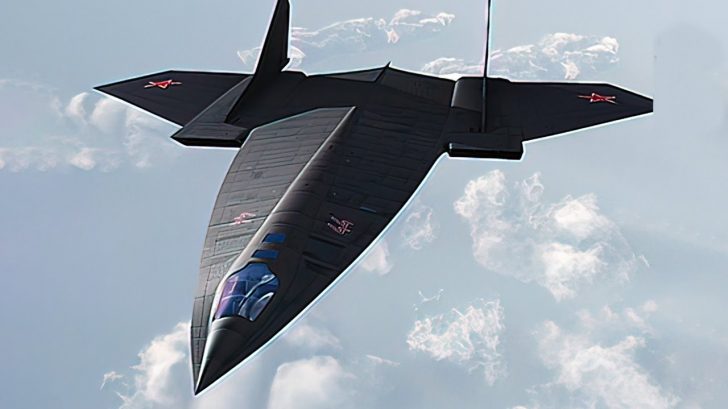It didn’t take long for another type of war to come in after the end of WWII. Across each side of the Iron Curtain, military factions raced against each other to produce the ultimate strategic bomber – one that had unprecedented range and was capable of piercing through any line of defense to deliver immense amounts of nuclear devastation toward the enemy’s largest cities.
Racing Against Time
The US appeared to have the upper hand after the introduction of the Convair B-58 Hustler, the first operational Mach-2-capable strategic bomber. However, the Soviets prepared a response to the B-58. It was an aircraft so big it could erase New York City before it could be detected.
The Dark Star
The Leningrad Red Banner Air Force Engineering Academy began designing its own strategic bomber in 1957. Significant amounts of data were collected by the end of 1959 and were used for evaluating the aircraft’s possible airframe design.
Known as the DSB-LK, the aircraft had a “flying wing” layout with a wingspan of 38 feet, a takeoff weight of up to 280 tons, and a dry weight of 88.5 tons.
The aircraft also didn’t have a pronounced fuselage. Instead, its nacelles were at the center, with the lower part protruding from the wings. Its overall build was akin to that of a flattened SR-71.
Promising Speeds
For power, the Dark Star relied on six VK-15M turbojet engines. The Russian-built aero engines offered a nominal thrust of 22,000 lbs and 35,000 lbs with afterburners.
While powered with six turbojets, the Dark Star was expected to reach Mach 2.8, a service ceiling of 35 km, and a maximum service range of up to 16,500 km. If built, the aircraft would have flown faster, higher, and longer than the B-58 Hustler. However, these estimates were never confirmed if they were indeed feasible.
Armament and Ordnance
The bomber was anticipated to transport up to 15 tons of ordnance. Though the exact type of ordnance is unknown, the Dark Star might have been capable of utilizing cruise missiles still in development. If necessary, the DSB-LK might also be able to use bombs weighing 11,000 lbs.
To defend itself from enemy aircraft, the Dark Star was designed to fit two automatic turrets able to shoot thousands of rounds per minute. The bomber could have also carried air-to-air missiles for extra self-defense.
Cancellation
Despite its potential, the Dark Star never went beyond its initial design phase. Many believe that the cancellation (or abandonment) of the project was due to the USSR’s incapability to build such a powerful weapon. The project in itself was more of a theoretical layout than a feasible design.
Perhaps the cancellation may have come after the introduction of intercontinental ballistic missiles. ICBMs almost invalidated every supersonic and hypersonic project on both sides since the missiles could do the same job at a fraction of the cost.
In the end, the Dark Star can be considered ahead of its time – but it was also ten years too late.



